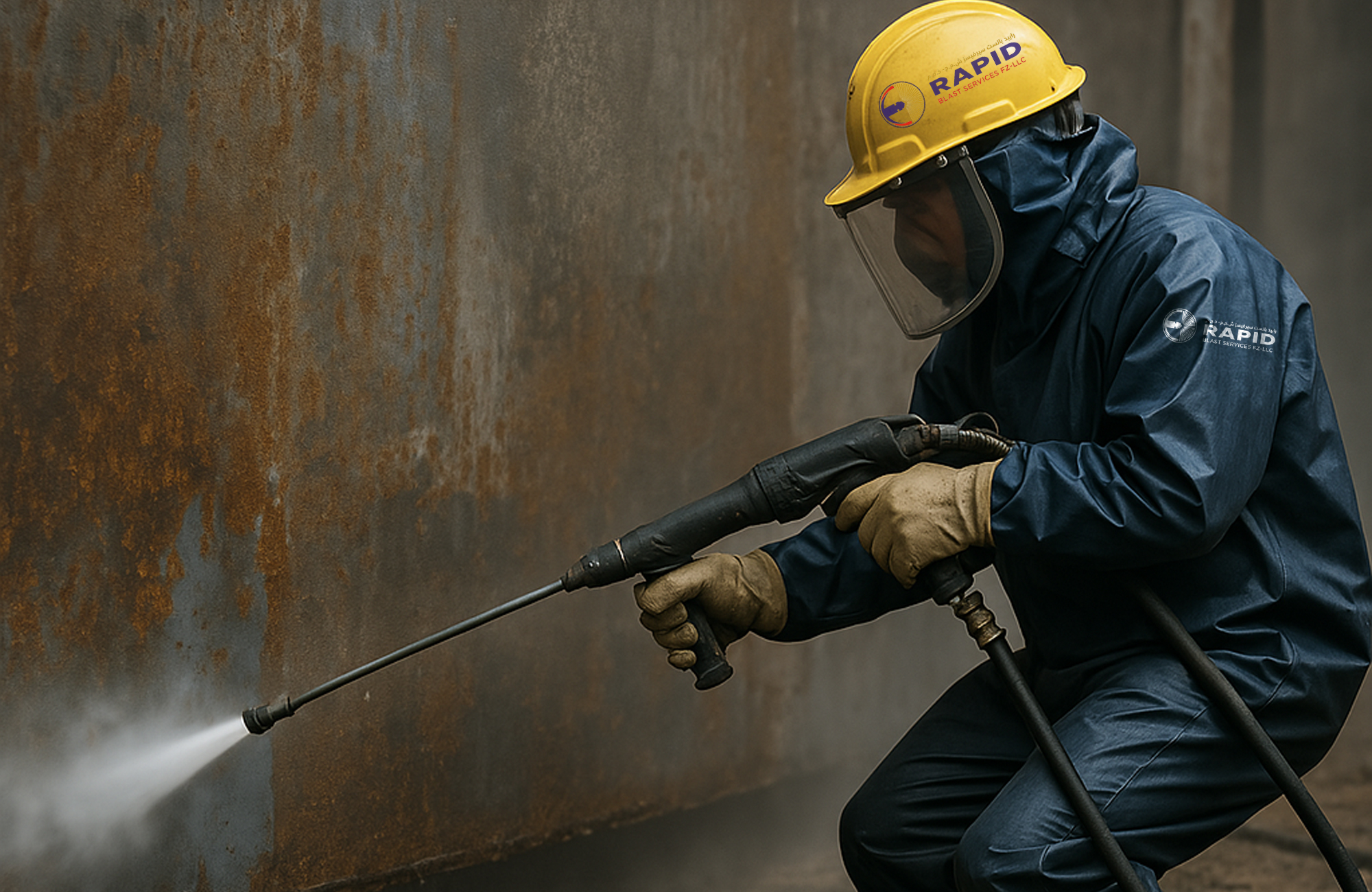- 0588499662
- ruddy@rbsfz.com

UHP Water Jetting: Revolutionizing Industrial Cleaning
In the ever-evolving industrial sector, cleaning and maintenance techniques play a crucial role in ensuring efficiency, longevity, and safety. One of the most advanced and effective methods currently being employed is Ultra-High-Pressure (UHP) Water Jetting. This technique is redefining industrial cleaning by providing a powerful, eco-friendly, and highly efficient solution for surface preparation, equipment maintenance, and contaminant removal.
What is UHP Water Jetting?
UHP Water Jetting is a cleaning process that utilizes water at extremely high pressures, typically above 30,000 PSI (pounds per square inch), to remove coatings, rust, residues, and other stubborn contaminants from surfaces. Unlike traditional abrasive blasting methods, UHP water jetting relies purely on the force of water, eliminating the need for harsh chemicals or abrasive materials.
Advantages of UHP Water Jetting
-
Eco-Friendly & Chemical-Free
-
UHP water jetting does not require hazardous chemicals, reducing environmental impact and improving workplace safety.
-
It minimizes the production of secondary waste, unlike traditional sandblasting, which leaves behind abrasive residues.
-
-
Highly Efficient Cleaning & Surface Preparation
-
Removes rust, paint, and coatings without damaging the underlying surface.
-
Ideal for preparing metal, concrete, and other industrial surfaces for recoating or inspection.
-
-
Cost-Effective & Time-Saving
-
Faster cleaning process reduces downtime in industrial operations.
-
Minimizes labor costs and extends the lifespan of equipment by preventing corrosion and buildup.
-
-
Safe for Sensitive Equipment
-
Unlike abrasive blasting, UHP water jetting does not generate heat, reducing the risk of warping or damaging sensitive materials.
-
Suitable for cleaning delicate machinery and components in industries such as oil & gas, marine, and manufacturing.
-
Applications of UHP Water Jetting
UHP water jetting is widely used across various industries, including:
-
Oil & Gas: Cleaning pipelines, storage tanks, and heat exchangers.
-
Marine: Removing marine growth, rust, and coatings from ships and offshore structures.
-
Manufacturing: Cleaning production equipment, molds, and industrial machinery.
-
Construction: Preparing concrete surfaces for repair and resurfacing.
